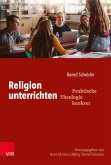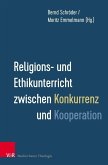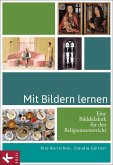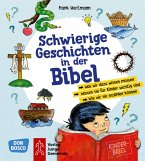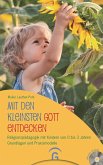Hanna Roose bearbeitet in dieser rekonstruktiven Studie die oft wahrgenommene Kluft zwischen (»praxisfernen«) religionsdidaktischen Vorstellungen »guten« Unterrichts und (»schlechter«) unterrichtlicher Alltagspraxis. Sie betrachtet dazu Unterricht als kulturelle Praxis. An die Stelle der Frage 'Was will und kann die Lehrkraft?' rückt die Frage 'Was passiert im Unterricht?'. Unterricht zeigt sich nicht als Vakuum, das die Lehrkraft nach ihrem Wollen und Können ausgestaltet, sondern als Ordnung mit eigenen Regelhaftigkeiten. Die Studie fragt, welche Regeln und Normen in unterrichtlicher Alltagspraxis sichtbar werden, und setzt jugendtheologische Erwartungen in ein differenziertes Verhältnis zur Normativität unterrichtlicher Alltagspraxis. Sie zeigt, inwiefern sich Jugendtheologie an der Grenze von Unterricht bewegt.
Hanna Roose deals in this the reconstructive study with the often perceived gap between ("non-practical") religious didactic ideas of "good" teachingand ("bad") everyday teaching practice. It looks at teaching as a cultural practice. The question 'What does the teacher want and what can s/he do?' is replaced by the question 'What happens in the classroom?'. Classroom teaching is not a vacuum that teachers shape according to their will and ability, but rather an order with its own rules. The study asks which rules and norms become visible in everyday teaching practice and places expectations of youth theology in a differentiated relationship to the normativity of everyday teaching practice. It shows the extent to which youth theology operates at the boundaries of teaching.
Hanna Roose deals in this the reconstructive study with the often perceived gap between ("non-practical") religious didactic ideas of "good" teachingand ("bad") everyday teaching practice. It looks at teaching as a cultural practice. The question 'What does the teacher want and what can s/he do?' is replaced by the question 'What happens in the classroom?'. Classroom teaching is not a vacuum that teachers shape according to their will and ability, but rather an order with its own rules. The study asks which rules and norms become visible in everyday teaching practice and places expectations of youth theology in a differentiated relationship to the normativity of everyday teaching practice. It shows the extent to which youth theology operates at the boundaries of teaching.


